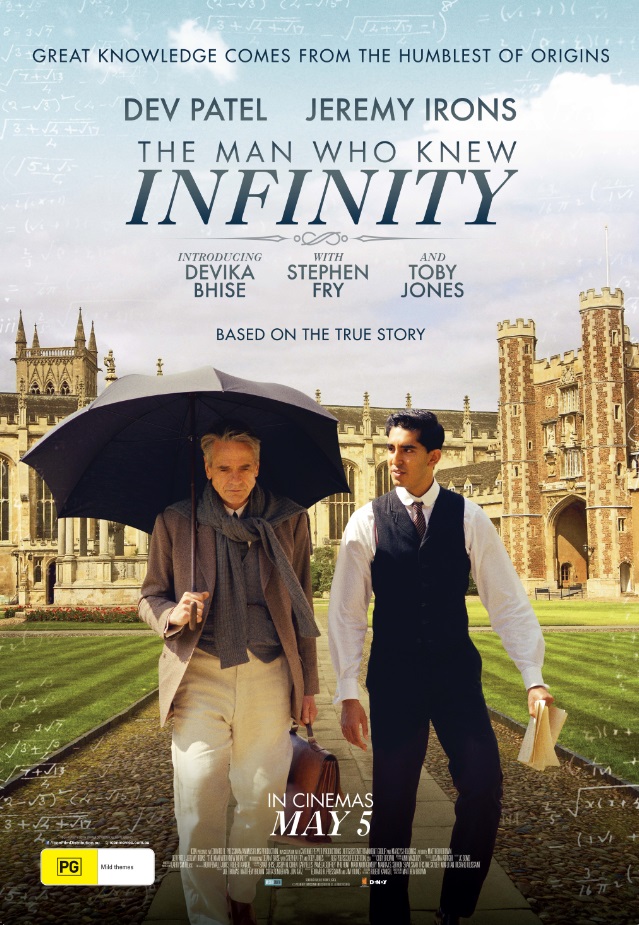It is a romantic story – well romantic story in the history of MATHEMATICS!
It goes back to 1913 when an Iyengar man, Srinivasa Ramanujan and English mathematician and Cambridge professor G. H. Hardy, first marvelled at each other’s arithmetical forte.
Srinivasa Ramanujan, born as Iyengar in 1887 in South India, though a genius in mathematics, that itself was a disaster for his academic graph – he repeatedly failed his college exams.
His circumstance was further aggravated with his impoverished background and he became a college dropout, living off charity of friends, while continuously writing theorems on borrowed writing books.
His difficulties were eased off a little when he landed a clerkship at the Madras Port Trust. It was at that time, when Ramanujan’s first paper – a 17-page work on Bernoulli numbers, was published in 1911 in the Journal of the Indian Mathematical Society.
Yet, public acknowledgement for Ramanujan as a mathematical genius eluded him, until G. H. Hardy.
In 1913, amongst his many letters to Cambridge scholars, one was to Hardy in 1913.
The ten-page letter contained about 120 statements of theorems on infinite series, improper integrals, continued fractions, and number theory – which Hardy had almost binned, doubting those formulas as work of an eccentric.
But there was something about the formulas and Hardy showed it to his collaborator J. E. Littlewood.
After a few hours, they concluded that the results “must be true because, if they were not true, no one would have had the imagination to invent them”.
Hardy wrote back to Ramanujan and just this stamp of approval from a Cambridge scholar improved Ramanujan’s status; he was inducted as a research scholar at the University of Madras.
But Ramanujan’s intellect required a bigger platform to flower, which Cambridge gave him. In March 1914, Ramanujan set sail for England despite his mother’s resistance.
This was when very successful five-year collaboration began – with Hardy’s analytical prowess and Ramanujan’s “process of mingled argument, intuition, and induction, of which he was entirely unable to give any coherent account”, according to Hardy himself.
The pair went on to become unlikely friends and made up one of history’s most bewildering and productive collaborations, working on the most complex problems known to man, with much of Ramanujan’s works, still relevant in maths and science today.
One remarkable result of the Hardy-Ramanujan collaboration was a formula for the number p(n) of partitions of a number n. A partition of a positive integer n is just an expression for n as a sum of positive integers, regardless of order. Thus p(4) = 5 because 4 can be written as 1+1+1+1, 1+1+2, 2+2, 1+3, or 4.
Ramanujan was granted him a Bachelor of Science degree “by research” in 1916 at Cambridge and the first Indian to be elected a Fellow of the Royal Society in 1918.
It is this numerical romance that is portrayed in ‘THE MAN WHO KNEW INFINITY’ – based on the incredible biography by Robert Kanigel and directed by Matt Brown.
Dev Patel playing Srinivasa Ramanujan, stars alongside Jeremy Irons in this film that explores the brilliance of a man, many believe could decipher the very fabric of the universe and possibly existence itself.
Although, Cambridge propelled Ramanujan to the world stage of Mathematics, shortly after the alien climate, culture and wartime shortages took a toll on his health and life. He died young in 1920 at the age of 33.
Ramanujan’s sense of intuition in manipulating infinite series, continued fractions, and more awed many including Hardy who said of Ramanujan: “I have never met his equal, and can compare him only with Euler or Jacobi.”
This story of the self-taught mathematical genius and his destiny to Cambridge from obscurity in his homeland of India; and his alliance with G.H. Hardy is the realm of The Man Who Knew Infinity, releasing on May 5.
RV with details from usna
Running Time: 108 minutes
In Hoyts cinemas – Highpoint, Watergardens, Epping, Waurn Ponds, Dandenong
In Village cinemas – Sunshine, Knox, Southland, Rivoli
Also at Dendy Brighton, Balwyn, Kino, Cinema Como, Westgarth Theatre, Cinema Nova, Sun Pics Yarraville, Classic Elsternwick, Belgrave Cameo, Lido, Ballarat, Waverly Pinewood, Croydon
Bharat Times has 2 in-season Double passes to give away. Those interested may write to Ramakrishna VenuGopal at r.venugopal@bharattimes.com with contact details.

